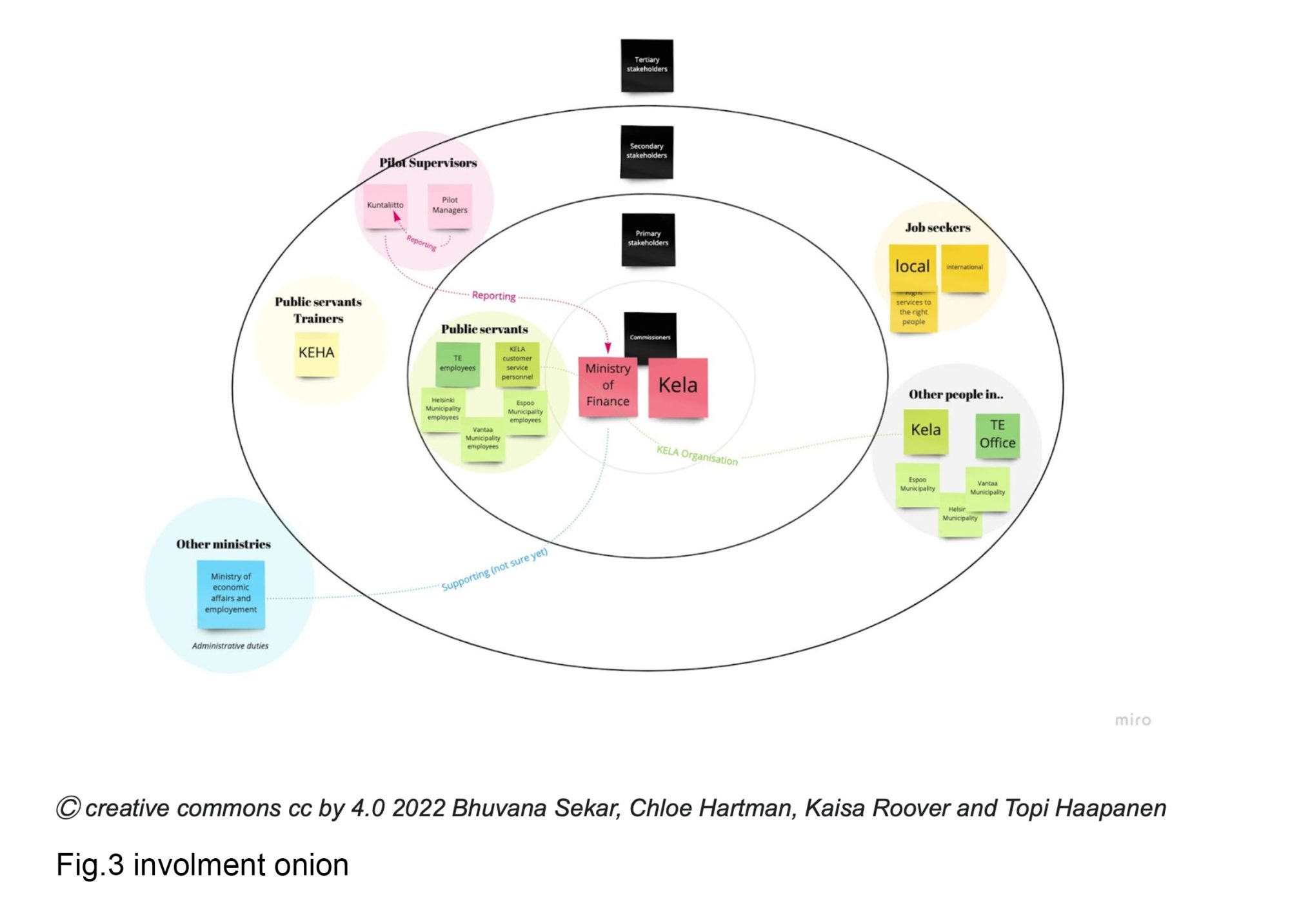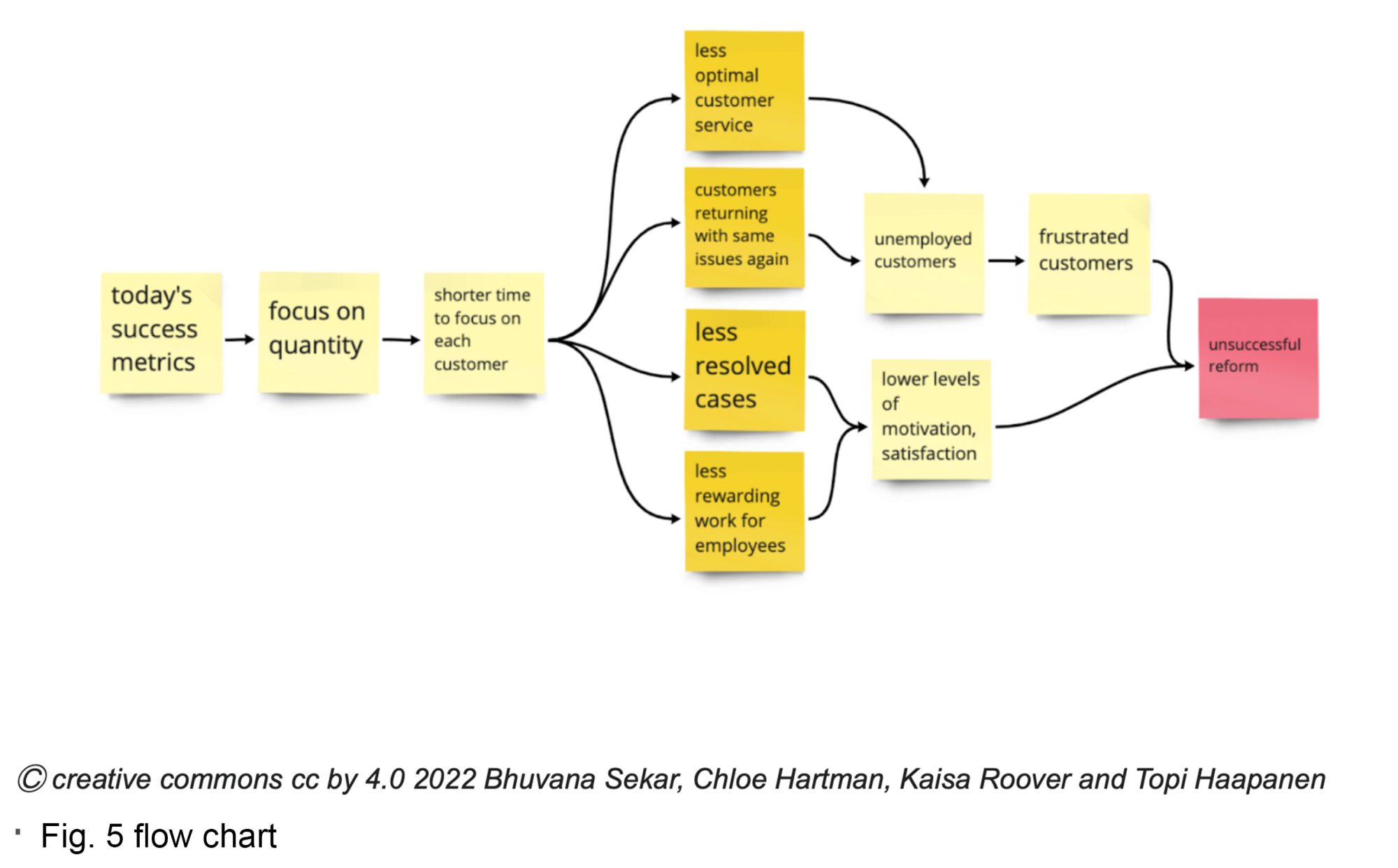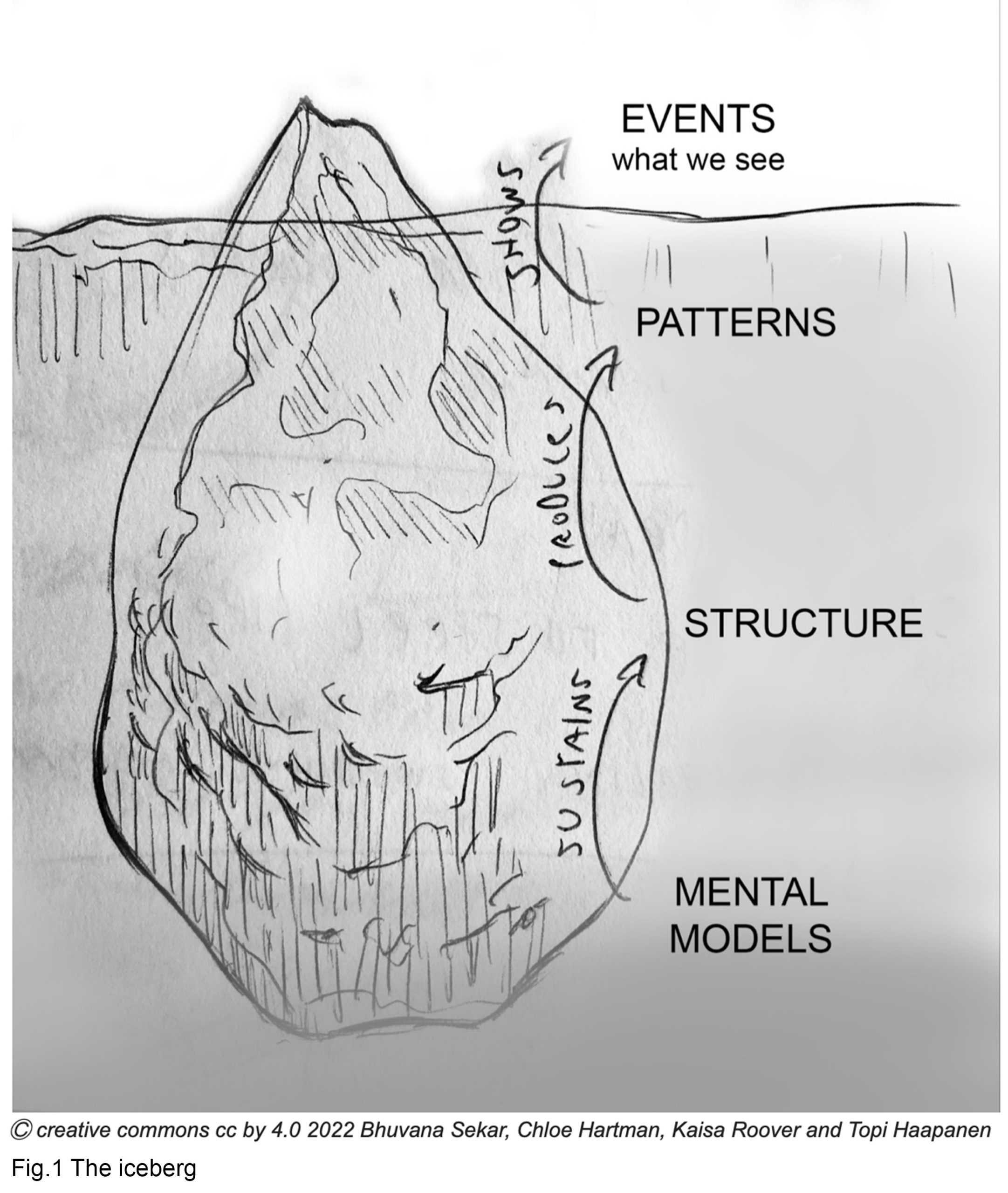This blog post reports on work-in-progress within the DfG course! The post is written by group 2B dealing with the Ministry of Finance’s brief on Orchestrating public governance in employment services (TE2024) by focusing on the public servants’ needs in the new reform model. The group includes Bhuvana Sekar from the Collaborative and Industrial Design program and Chloé Hartmann, Kaisa Roover and Topi Haapanen from the Creative Sustainability program at Aalto University
Understanding the upcoming changes in the TE-2024 reform
The theme of the second portion of the course has been systems perspective. After several fruitful interviews with public servants across social and other administrative services, we developed a model to understand the interactions between our stakeholder organizations, which we have refined and streamlined little by little. The fundamental and basic questions of the project brief have turned into more detailed ones and these questions in turn have helped us find insights. Through these insights, we will start to explore solutions.
General thoughts
Probably everyone who lives in Finland is familiar with Finnish social services, at least on some level. It should also be clear that behind these services there are organizations, and behind these organizations there is bureaucracy and behind bureaucracy there is policy. Sounds obvious, but once these layers are identified, understanding the complexity of the intertwined systems feels quite overwhelming. Does anyone really understand the interconnectivity between administrative processes, organizations, and the role these play in society? Am I the only one who upon gazing into the ocean of bureaucracy experiences horror? Upon interviewing workers from Kela, Keha, and TE offices frustration towards practices has come about as well as sympathy towards the clients of these services. Often the people who come to seek assistance from employment services or other social services find themselves in a kafkaesque cycle; standing in line for a couple of hours only to find out that they are in the wrong line in the wrong office. Or find themselves without unemployment benefits due to a misunderstanding of how the process works.
As an underlying factor, the entire value system on which the Finnish welfare state is built can be called to question. The Finnish parliamentary election approaches and with it the pressure to get the reform done before the next governmental shift.
“Generally I see the reform as a positive thing and I’m looking at things from the perspective of the client and not so much organisationally. Personally, I do not subscribe to any kind of organizational rivalry however I know that it is a thing.”
– KEHA
Certainly, there are multitudes of challenges on the horizon for the TE-2024 Reform, but it’s far from being hopeless.
Progress
As the Design for Government course advances to its second half we are now much wiser than at the start of the course. Keeping the perspective of public service people in our focus, the several interviews and dozens of mapping sessions aiming to understand the functions and relations between the stakeholder organizations, the proverbial iceberg under the surface is taking shape. A couple of rounds of the loop “Interview, discuss, map, realize and repeat” has yielded results.

Upon the midway review presentation, we illustrated two research questions and three major insights regarding our investigations. The research questions were the following:
1. How do stakeholders communicate and collaborate to provide employment services to people living in Finland?
2. What changes will the TE2024 reform bring to the organizations involved and their respective employees?
As mentioned before; our understanding of the system that we are dealing with crystallized for us via the use of visual tools, using an onion diagram. In the middle, we have the core stakeholders and upon going towards the outer layers the number of stakeholders and interconnections get more intricate.

We placed the most value on the learnings gathered in the interviews. People being interviewed were experienced public service workers and had plenty to give. Selecting the most relevant quotes from interviews into themes we were able to form insights about the current state of social benefits and employment services, as well as inter-organizational challenges.
“Career counselor’s job is pressured with time: the biggest challenge of the system. URA system is from the 90 ́s. Lots of automation could be happening here. All this time is away from clients. We have people building pyramids without machinery. This is the message for the Ministry of Finance. Basic income could solve this. Let’s not use money in bureaucracy.” –Espoo employee
Affinity diagraming and flowcharts helped us analyze existing and possible causalities.

Insights
Finally, our process had yielded three insights:

What comes next? The Cosmic Horror of Finnish Bureaucratic Iceberg
The past weeks have been rather intensive and stressful. Seeing the top of the iceberg is one thing, diving into the depths to find out its true essence is another. However over the weeks, the scary and convoluted world of bureaucracy has started to seem less abstract and more familiar. The diligent systemic analysis performed by the multiple groups working on the course has produced firm groundwork on which to build our hypothesis. After the period break, we dive into learning about policy instruments and design interventions. With the solid background we have built regarding these topics, it will be interesting to see how to apply these to our project.
The DfG course runs for 14 weeks each spring – the 2022 course has now started and runs from 28 Feb to 23 May. It’s an advanced studio course in which students work in multidisciplinary teams to address project briefs commissioned by governmental ministries in Finland. The course proceeds through the spring as a series of teaching modules in which various research and design methods are applied to address the project briefs. Blog posts are written by student groups, in which they share news, experiences and insights from within the course activities and their project development. More information here about the DfG 2022 project briefs. Hold the date for the public online finale online 09:00-12:00 AM (EEST) on Monday 23 May!

